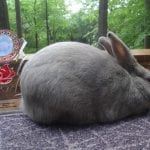Scientific Facts
| Common Name | Mountain Cottontail / Nuttall’s Cottontail |
| Scientific Name | Sylvilagus nuttallii |
| Size | 35 to 39 cms (13.8 – 15.4 inches) |
| Life Span | 3 years or less |
| Habitat | Brushy or wooded areas with plenty of vegetation. |
| Country of Origin | North America (Canada) |
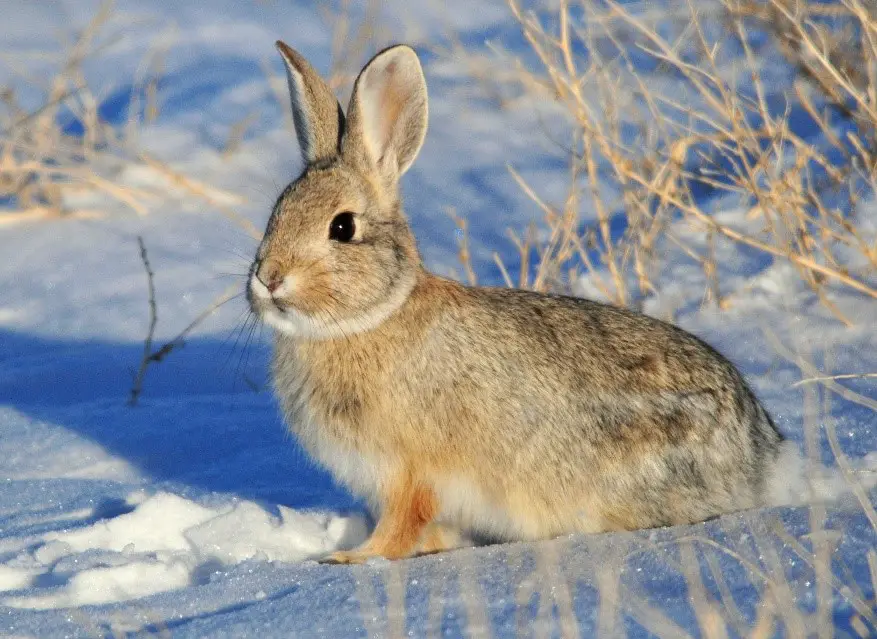
The cottontails of the Bison Range instantly leap off when they sense uncertainty, similar to most rabbits, which involves transportations and humans. However, they are marked at events adjacent to the road, especially in Pauline Creek, where there is a screen imminent enough to go to instantly to cover. Cottontails create a food foundation for a broad category of predators, including coyotes, owls, eagles, and hawks.
Physical Description
Morphological description
A small rabbit, Mountain Cottontail has a light brown back fur, grey on the sides and bottom, and a white belly fur. A well-defined light brown neck is present on the rear of the crown and nape. The ears are spired with black; the tail is white on the back surface and grey below. The head has a definite interparietal ossein and supraoccipital methods that reach the neurocranium. Body sizes (scale in brackets) for Canadian Mountain Cottontail are total length 31.9 cm (263-363), tail spine 3.3 cm (24-44), back foot 8.5 cm (75-90), ear 5.7 cm (54-58), and body volume 17.4 oz (342-778).
The only other rabbit or hare or in the southern depths meadows of British Columbia is the Snowshoe Hare (Lepus americanus). The White-tailed Jackrabbit (Lepus townsendii) seems to be abolished. However, L. americanus holds a white coat in winter, animals in brown summer coat could be mixed with Mountain Cottontail. L. americanus lacks the brown neck on the rear of the crown and the greyish-bottom; it is likewise much more extensive (back foot greater than 11.6 centimeters, ear greater than 6.3 centimeters).

Genetic Description
Nothing is recognized regarding the population arrangement of this rabbit in Canada. There are no geographic boundaries that would be assumed to restrict gene issue among Mountain Cottontail in the Okanagan Basin.
Geographical Range
The mountain cottontail dwells frequently in the western section of the United States. Its area is outlined in the north by the US/Canadian border, in the south by the middle of New Mexico and Arizona, in the west by the Sierra Nevada Mountains, and in the east by Montana’s eastern border; however, a small range of Canada directly above Washington and Montana is likewise covered.
Habitat
Environment—likewise termed habitat, living requirements, or food and shelter—has more impression on the rabbit distribution than any other constituent. A great rabbit environment gives sufficient nourishment and defensive protection. The massively farmed area provides ample food, but frequently not enough protective shelter.
Rocky field ridges, ravines, poorly-drained forests, boulders, and other fields not being operated can be arranged to raise healthy rabbit populations. These ranges may be planted with shrubs or pines. Cutting along forests corners spurs the germination of low plants that will produce food and shelter for several years.
People involved in producing more summer meals for rabbits can sow grain mixes with grasses, clovers, wildflowers, and forbs. These sowings profit from yearly sustenance, whether it’s the elimination of non-target species, soil improvements, or construction administration, and must be placed near sufficient protection.
Rabbits love to seek refuge in scrap heaps. Brush piles are best given by setting smaller scrap over several firms, huge timbers, which grant assistance. The more massive timbers also retain the scrub off the terrain, limiting its speedy decline.

A coniferous screen that is thick at earth level produces excellent protection for cottontails, though seedlings demand sustenance to stay good range spaces.
Most of Pennsylvania’s small competition is built on private property. The answer to a bigger rabbit population is environment development by private proprietors.
Common Behavior
All cottontails are sunset, nightfall, or early evening animals. Some are busy throughout the midday and peak dawn period when the sun is low, but all lead to dodging the daylight and middle of the day. Accumulating food and consuming it, as well as excavating holes – all such movements are held for the darker, low luminous portion of the day so that the danger of predators is lessened. During the day, they burrow in scrub or shrubs and strive their best to have a rather profound profile.
Cottontail rabbits are quick small babies. They can attain velocities of 18 miles per hour when pursued by a predator, but such rates are exhausting, and they bounce or get small springs and bounds to better maintain their vitality. While fleeing, they run in a winding form, racing here and there, so that the animal tracking them can get tipsy from moving and following such brisk action at the same time.
Another know-how up their sleeves is to “stiffen” or be flawlessly tranquil for some moment. The concept here is that they will not be seen if they are supremely quiet and level to the terrain. Natural predators of cottontails are skunks, weasels, mink, snakes, hawks, owls, coyotes, and foxes.
Cottontails have extremely robust and huge paws. They employ them to excavate retreats in the semi-soft soil near shrubs and bushes, they dredge up taproots and stalks of plants to consume, and they interact with one another by tramping their rear feet. When competing with small predators or with conflict during the breeding period, cottontails launch or beat with their back feet to produce a powerful kick.
The whole breeding period begins in February to March and continues till early autumn. The dating routines of these small kids are considerably entertaining. They are advanced reproductive fitters; frequently, juvenile rabbits can couple at 2-3 months of age. They denote a preferred field or territory of their own in the coupling period and will strive with other rabbits from their catacomb, both males and females, to protect their area. A male will gratify in a graceful leap-skip-bounce and battle swing with a female and, once completed, will immediately proceed on to other females.
Cottontails as a variety can be extremely detrimental, not merely to fields. They bite and grind off twigs, offshoots, and tiny bushes. They can scrape or extract the case of woods and hedges. Therefore, they can destroy backyard plantations, orchids, parks, and landscapes. They are likewise attached to growing trees, with fine shell and can settle up damaging a whole recently produced vegetable. Their productive breeding practices and smooth versatility to various existing requirements give them a slightly devastating small annoyance.
If you achieve to get a sight of this field and hedge the resident, remain calm and do not address it, so you can witness it properly. Rabbits are pretty modest animals and will escape at the view of anything strange. And heed the white inflated tail, when it retreats.
Diet and Feeding Habits
Even as each breed is different, any of these rabbits are herbivores, which indicates that they consume sprouts. There is an enormous diversity of shrub varieties that the 20 various kinds of admiration. Some several food origins include bark, stems, grasses, seeds, flowers, twigs, berries, leaves, and more.
Furthermore, several breeds of rabbits also consume their first stercorous pellets after its primary absorption. While this seems offensive, by basically absorbing their menu the following course, the rabbit can digest all of the numerous nutrients with the most prominent efficiency!
Reproduction and Life Cycle
These cottontails are commonly solitary except the territory that can sustain higher than one mammal. The mammal couple between March and July and almost constantly in the evening. They do not create a couple of links.
Slowly growing day period in spring encourages the start of breeding. Males pursue each other to secure supremacy. In conflicts between the sexes, a female may at the initial confrontation in a warning stance and beat out at a male with her front limbs. As courting advances, the two sexes may plunge across one another, or one rabbit may jump into the air at the same time the other dashes underneath it. Breeding happens from late March toward August and September; throughout that extent, a strong female may present numerous litters of a juvenile.
Before labor, a parent cottontail builds a cradle by excavating a cavity in the territory about 12 cms wide and 10 cms deep. The female marks the cavity with hay and coat from her body then appends a housing of branches and stalks. Cradles are made in the evening, in stroke, or among compact shrubs on the jungle ground.
The incubation phase is approximately a month, and the female can produce four or five litters per cycle. The litter measurement is normally 4-8, though, in California, it is not uncommon for a litter to comprise of merely two infants. Female newborns are somewhat more plentiful than male newborns (1 male to 1.1 females)
The juvenile can travel around outside the cradle when they measure approximately 0.16 lbs and are detached following only one month. Reproductive development seems to be at least 3 months but presumably is succeeding than that.
Before the female produces nativity, she builds a cradle that is formed similar to a container and files it with fur, grass, and twigs. The juveniles are altricial with no fur, and they are visionless.
How Long Do Rabbits Live?
Rabbits are ephemeral; presumably, none perish of old duration. The study conveyed on eastern cottontails implies that solely approximately 25 percent of exemplars remain for two years, with the standard existence for nearly 15 months. Extinction degrees and existence for New England cottontails are seemingly comparable.
Rabbits are an essential food reservoir for numerous predators. Owls, hawks, weasels, fishers, bobcats, foxes, and coyotes all abolish and devour rabbits. In current years, distributions of red foxes and coyotes have expanded in the entire New England cottontail’s scope. These flexible predators can remain in fields where improvement has shattered the scenery. Biologists investigating New England cottontails in southern New Hampshire discovered that predation by red foxes and coyotes was the most prevalent reason for mortality amidst the radio-furnished rabbits they observed.
How to Breed
Breeding Habits
Most cottontails reproduce only throughout the flowering to autumn months. The limitations are with breeds that exist in the more temperate southern regions that hold sufficient diet year-round. Males and females get together merely for reproducing and split-up once the coupling is accomplished. Females are continually reproducing. They will customarily be gravid with different litter before their prevailing litter abandons the cradle.
Gestation and Litters
Although the incubation ranges for each breed, it solely modifies by several days. Most varieties have an incubation of approximately a month, with the marsh rabbit being an unusual limitation. Marsh rabbits have a development that serves up to 40 days. Females commonly produce litters of three to five infants. They will regularly hold three to five litters in a period.
Maternal Care
Newborn cottontails are carried almost hairless and visionless, totally reliant on their parents for attention. Before labor, the mother obtains a cradle in an obscure place beneath a shrub or a cell, delicately placing the den with a combination of soft leaves, twigs, grasses, or fur. She feeds the kids for two to four weeks hinging on the species. At the period of detaching, the infants abandon the cradle and grow self-sufficient of their parents.
Sexual Maturity
From delivery to detaching to reproductive development, rabbits grow swiftly. About two months following ditching their mother, at a period of three months, both males and females become reproductively developed in most varieties. At this point, the rabbits produced early in the period may continue to cultivate and support junior of their own before the winter commences. The swamp rabbit is a limitation to this. This species gets nearly six to eight months to become reproductively mature.
Wild Rabbit Lifespan
Cottontails are the main prey mammal for coyote, hawks, snakes, and several other predators. For this analysis, most cottontails do not possess a lengthy existence. They have been identified to exist beyond the age of 10 in confinement, but in the wild, they rarely last exceeding 15 months.
Pet Care
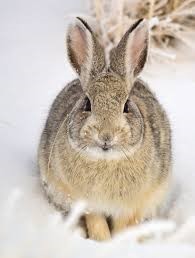
Step 1
Create or buy decent shelter for your rabbits. Personalized enclosures are the most dependable venture to evade undesired breeding. Section of the basement must be obtained from ¾-inch fence net, which will enable scrap to drop through toward the area underneath. Otherwise, a dish can be fastened below the cables for a more comfortable tidy-up. The opposite half of the enclosure must include a firm retreat, or sleeping sections, filled with raw hay with an access opening out to the line division. The enclosure must hold a waterproof canopy, a serving platter, and a water container. And all enclosures require firm joints and fastened closings at the entrance spots.
Step 2
Construct a rabbit track. It doesn’t need to be anything elegant, merely a field for your rabbits to take regular activity. If at all feasible, it’s most satisfying to create holes in rabbit enclosures, attaching the two. Though, if this is impracticable, solely make a track in your garden and bring the rabbit to that. Make certain it is protected and guarded to hinder release or assault by predators. Establish the track in a dim region and make sure there is an available ration of water.
Step 3
Obtain rabbits from a reliable breeder. Perform online research or visit the province display and mark out the rabbit presentation. The figure of rabbits you start with is a topic of a particular choice, though have in mind, each female can produce three or four litters of juvenile every cycle, and litter measurements vary from five to 10. You must have one buck (male) for each doe (female). If you do not retain your rabbits in an isolated enclosure, recall that they will attain adulthood at approximately eight months of span and older and do produce eggs shortly following coupling. Additionally, if you leave more than one male in an enclosure, upon entering adulthood, one will petrify the other.
Step 4
Compose a document of which female is produced by which male and retain switching them to sustain a healthy distribution. Have in mind; if you possess both cottontail rabbits and San Juan, they will not reproduce with one another. The San Juan seems similar to a cottontail, though it is not.
Step 5
Satisfy your rabbits. Each rabbit must eat half a cup of industrial rabbit grains regularly, slowly raising the measure to 1 cup when grown-up size is attained. Furthermore, rabbits relish a broad assortment of fresh produce, such as strawberries, apples, broccoli, spinach, and carrots. In winter, they will gnaw on grass (timothy, alfalfa, or red clover). Load containers with fresh water every day.
Step 6
Check your rabbits regularly; however, with cottontails, this will be added to a trial as they are inborn to be scared of people. Fix on a set of emergency mittens and a long-sleeved top. Take the slack skin within their collar blades with one hand and raise, maintaining their body mass with the opposite. Secure the rabbit near to your breast, enveloping your arm throughout its midsection, do not release the neck of the collar until the rabbit grows used to being touched.
Step 7
Washed enclosures at least once a week. Eliminate any excrements, unconsumed meal, or soiled covers. Transfer the food vessel and the water container. Rinse everything and soak in a moderate sanitizer. Enable everything to air dusty and restore. Dig up any collection of excrements or transfer the catch plate and exhaust it. Rinse the plate with foamy water, and then employ with sanitizer.
Availability
Several rabbits make great pets, such as white hares and other tamed bunnies. Regrettably, the cottontail rabbit is a wild mammal that lives wild rather than a living obedient. They can create harm to keepers. For these analyses, it is ill-advised to strive to attempt getting a pet of a cottontail rabbit.
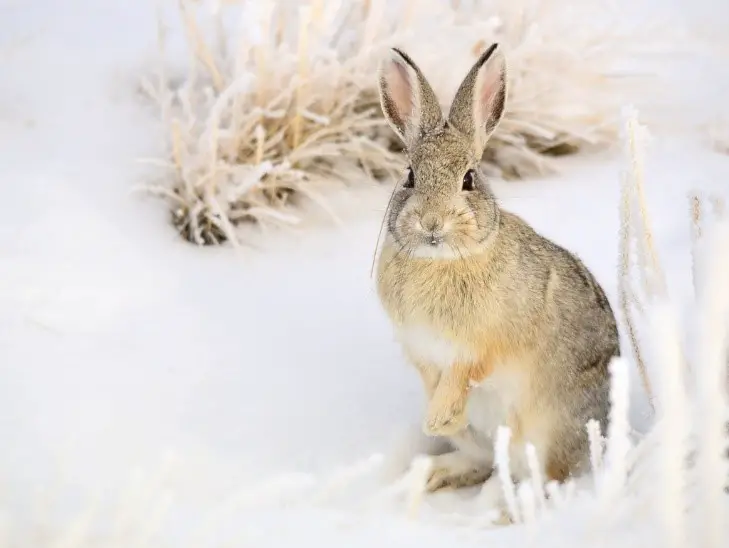
Ecosystem Roles
Mountain cottontail consumes the field on ridges and holds the plants scattered.
Parasites include cestodes and nematodes.
Economic Value for Humans: Concrete
Their excrements serve as compost, and the rabbits are possible food for threatened species of carnivorous snakes, birds, and mammals. Similar to other cottontails, the mountain cottontail is appreciated by humans for its elegance and finesse.
Economic Value for Humans: Adversary
They feed on lawns until the field is wasted, which can create environment modification.
Limiting Factors and Threats
S. n. nuttallii is at the northern boundaries of its scope in Canada, where it dwells a confined region in the Okanagan Basin. Natural determinants that define its restricted scope are not manifest, though its population domain in Canada corresponds with the boundaries of low altitude bush-grasslands environments. Succeeding its presence in 1939, S. n. nuttallii attained its latest span inside 15-20 years. Although bush-grasslands environments live in the Fraser River, Nicola, and Thompson valleys, these plains are secluded from the Okanagan and Similkameen valleys by widespread fields of woodlands. The insufficient adequate territory is presumably the major restriction on the population of S. n. nuttallii in Canada.
This subspecies is not a danger in the United States. In Canada, its population is in a region experiencing fast expansion and environment modification. The merely immediate menace is continuing territory damage from agricultural and urban agricultural expansion. From 1939 to 2001, residential expanses in the southern Okanagan-Similkameen range progressed from 368 ha to 3,567 ha, and refined fields rose from 11,482 ha to 19,057 ha with an identical suppression of bush-grasslands territory. Most territory declines transpired before 1995, though more S. n. nuttallii territory is suspected to be wasted. The complete human community for the Okanagan-Similkameen Regional District was measured to be 81,967 in 2004. It is predicted to stretch 112,000 (27% increase) in this area by 2021 with calculated damage of 4,000 ha of field, 4,000 ha of riparian environment, and 250 ha of arid woodland.
The extension of the liquor business with the current development of grapevines has likewise affected the territory. Grapevines in British Columbia presently equal nearly 2,210 ha with largest in the Okanagan Valley. As 1999, 517 ha of the area has been transformed into grapevines; added 242 ha of the latest grapevines are predicted for 2005-2006. The measure of Nuttall’s Cottontail environment that was on these areas transformed to grapevines is concealed. The environment has been wasted in the southern Okanagan valley. For instance, several of the benchlands with vast bush-grasslands territory on the east side of Osoyoos Lake in the Osoyoos Indian Reserve, a region identified to promote Nuttall’s Cottontail following the early 1950s, (have been transformed to grapevines. The further territory on the Osoyoos Indian Reserve lands could be suffered from later expansion.
Possible perils are several considered that cattle feeding decreases distribution quantities reasonably due to the decline of search. Nevertheless, no study has been completed on the influences of feeding on S. n. nuttallii distributions in British Columbia. However, virus lures were employed 25-30 years past to manage S. n.nuttallii grazing on growing fruit trees, it is no longer deemed an annoyance, and this system has been discontinued. Insecticides utilized in fruit farms conceivably could produce an impression, though this rabbit is rare in developed agrarian areas.
Conservation
The national ranks are N5 (secure) for the United States and N5 for Canada; universal heritage status level for S. nuttallii is G5 (secure). The subspecies S. n. nuttallii is ranked T5 (secure) universally; national orders are NNR (not listed) for Canada and N5 (secure) for the United States. British Columbia ranked this subspecies S3 (vulnerable). Washington State’s ranking of S5 (secure) would apply to the subspecies S. n. nuttallii. Nuttall’s Cottontail was evaluated by COSEWIC in 1994. The Prairie population was entitled Not at Risk; the British Columbian population (S. n. nuttallii) was appointed Special Concern.
While the determinants that influence cottontail distributions are not prevalent, it is equitably simple to develop populations momentarily. The figures of cottontails culled by predators and hunters are not as significant as the fraction of them that persevere to reproduce. A healthy environment is extremely essential for continuation since it gives sanctuary from predators. Brush collections can be created by land keepers, but modern brush piles should be done every several years. Cottontails favor territories that possess diverse habitat advantages, such as brushy draws, washouts, meadows, or grassy shelterbelts. Landlords and land handlers can adequately improve cottontail representations by preserving or building these types of environments.
Facts
These bunnies are popular throughout the Americas, and various species are uncommonly frequent. Among twenty several species to pick from, there is so much you can discover concerning these animals!
Social Arrangement – Several breeds of cottontails are friendly, and favor subsisting in huge groups. You can generally spot various animals searching for food collectively, and they will commonly partake dens or tunnel methods. Filling in a group likewise holds these mammals more protected from predators.
Significant Prey – The several species of cottontails are an astonishingly significant reservoir of food for numerous distinct predators. The rabbits breed at a powerful pace, and there are frequently loads of cottontails in a given distribution to maintain the predators in the range. Some prevalent predators include mountain lions, foxes, snakes, bobcats, birds of prey, coyotes, and more.
Eastern Cottontail – Experts aren’t fooling when they state that most cottontail rabbits are extensive and general. The eastern cottontail is the most well-known rabbit of any species in North America. Notwithstanding this, the human project endangers several confined distributions of this species, but the distribution as a combination is progressing in the figure.
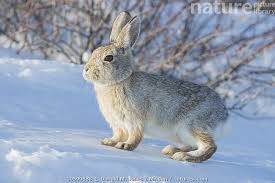
FAQs
Where do mountain cottontails live?
Mountain Cottontails are observed in Canada and western USA. They generally reside in forested or brushy fields with loads of vegetation.
What do mountain rabbits eat?
Cottontail rabbits consume a broad diversity of plant foods, including bark, buds, fruits, leaves, sprouts, sedges, and grasses. Throughout the summer months, cottontails essentially eat weeds, succulent annuals, legumes, grasses, as well as the occasional garden vegetable.
Is it safe to eat wild rabbit?
Yes, there is such a matter as rabbit fever, even now. Although no, it isn’t vast intimidation and shouldn’t have those who want to do so from shooting and consuming wild lagomorphs.
Can you tame a wild rabbit?
Yes, you can tame trained rabbits, but wild rabbits are a separate matter – you cannot tame them.
Are wild rabbits dangerous to humans?
Taking wild rabbits and having them can be risky, particularly since they could carry the conceivably lethal infection identified as rabies on to humans who surround them. Not solely this, but wild rabbits will not be used to being in cages and managed by humans.

